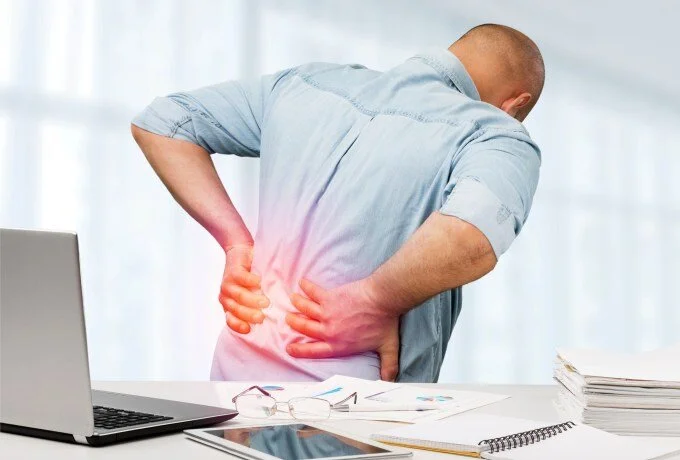Winter is here! We have said goodbye to the mild fall temps only to be greeted with the icy cold handshake of old man winter! That means scraping off the frozen windshield, bundling up every time we head out, and putting on heavy boots to go stomping off into the snow. Whether you are pushing the shovel or just going across the parking lot, you may take a moment to look back at your footsteps in the snow. The winter snow is a perfectly clean canvas waiting for us to paint a little history, and a great tool to evaluate one of our most basic body mechanics. Our footprints tell us more than where we've been, they tell us where we are going. But most importantly, they give us an idea of how we are getting there. Just by looking at our footprints in the snow, we can tell a lot about a person and even why they develop chronic pain.
For example:
If the footprint turns outward (toe out), it means that with every step, you transfer your weight from the outside of your heel, and roll it through the inside of the large toe. Repeat it a couple thousand times a day and it can cause toe and ankle problems, excess pressure on your knee, hip, or lower back problems. Add the extra weight of the boots, snow, and ice and you have the perfect formula for an accident waiting to happen!
If you toe inward or are walking on the outside of the foot, balance is usually compromised. The small outside toes are punished, encouraging them to turn under the neighboring toes, and incredible torque is placed through the knee usually causing excessive "wear and tear" and eventually pain.
If your footprints are spread wide and with a short stride, it demonstrates that you may not extend well at the hips. This means you shift your weight from side to side instead of striding forward. Not only is it less efficient, but it creates much more work for your hips and lower back. The outside of your legs and hips usually tighten down with a vengeance, causing your lower back to get stiff and painful.
How should you be walking? Having your feet placed hip-width apart and an average forward stride is the best position to be in. Optimally, you should be striking the center heel, rolling your weight through the bottom of your foot, and then off the first (inside) three toes. The first three toes of your foot are larger than the others for one reason--to take the full weight and force of your body when standing or during gait. Combined with the complex architecture of the arch of your foot, these larger inside three toes create a spring-like action that catapults you forward. The smaller and more fragile outside two
toes act more like "helpers", and maintain or redirect movement/balance back to your center of gravity.
Anyone who owns an activity watch or pedometer can eagerly tell you almost exactly the number of steps they take a day, which demonstrates how much repetition the feet and legs actually get. If you have chronic pain in your lower back, hips, knees, and/or feet, you may want to consider that you probably average thousands of steps a day, seven days a week, and 365 days a year. The workload of walking improperly really begins to add up fast, and your body starts to complain. If everyday gait and movements become more efficient, there is less effort, fatigue, and stress on the body's joints.
Always remember, it's what you do every day that makes the long-term difference. The winter footprints give us a visible record that reminds us of what we are doing and gives us a chance to make some changes. The snow can help us be aware of how we are walking, so the steps we take in the spring are truly a step in the right direction!





